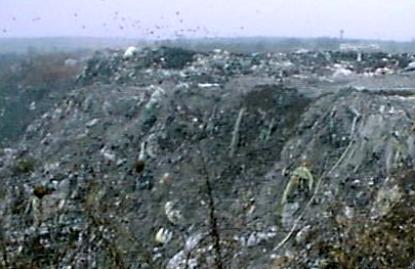The breakneck pace of industrialization in the Asia Pacific has brought in its wake increased quantities of waste and a spurt in energy costs, population, and greenhouse gas emissions.
SINGAPORE, Jan. 19 /PRNewswire/ — Landfill disposal and incineration do not find favor with governments as they create space and environmental problems; thus, countries are increasingly turning to waste to energy (WTE) as a single solution for the dual objectives of waste disposal and energy creation.
(Logo: http://www.newscom.com/cgi-bin/prnh/20081117/FSLOGO)
New analysis from Frost & Sullivan (http://www.environmental.frost.com), Energy Efficiency Series – Waste to Energy – Biological and Thermal Treatment, finds that the market is likely to grow at a compound annual growth rate (CAGR) of 6.7% for thermal WTE, and 9.7% for biological WTE from 2008 to 2015.
“In most Asian countries, solid waste is commonly disposed through open dumping, which is the easiest and cheapest method of removing waste from the immediate environment,” says Frost & Sullivan Consultant Melvin Leong. “Meanwhile, the demand for energy is ever increasing, and it is only a matter of time before conventional energy sources are depleted.”
By recovering energy from waste, countries cannot only get rid of their waste and compensate for their diminishing natural sources of energy, but also earn carbon credits. Further, companies that use advanced WTE technologies as part of their integrated waste management strategy are eligible for investment tax allowance and income tax exemptions.
Despite its obvious advantages, users may be reluctant to adopt a WTE solution as there are many cheaper waste treatment methods. WTE plants or equipment requires high capital investment. An incineration plant with a capacity of 1,300 tons of waste per day is likely to cost around $30 million to $180 million to construct, while the sanitary landfill’s capital costs range from $5 million to $10 million. These significant outlays considerably hinder the widespread commercialization and large-scale implementation of WTE projects.
“The total investment required for energy supply infrastructure worldwide from 2001 to 2030 is estimated to be a staggering total of $16 trillion or $550 billion per year, of which, half is needed by developing countries,” notes Leong. “However, many local and regional authorities view the WTE (thermal and biological) method as a genuine and value-adding solution in waste minimization schemes and the only viable big-scale alternative to landfill.”
While the authorities prepare to deploy WTE solutions, the governments’ and private sectors’ PR machinery have to move into gear to enhance the overall public perception of WTE technologies, since it is largely deemed an environmentally damaging method. Therefore, better public awareness, capability development, and robust financial tools, along with stringent regulations and privatization, can go a long way in promoting WTE methods in the Asia Pacific.
If you are interested in more information on this study, please send an e-mail to Donna Jeremiah, Corporate Communications, at djeremiah@frost.com, with your full name, company name, title, telephone number, company e-mail address, company website, city, state and country.
Energy Efficiency Series – Waste to Energy – Biological and Thermal Treatment is part of the Environmental Growth Partnership Services program, which also includes research in the following markets: strategic analysis of green technologies market – water and wastewater management, strategic analysis of green technologies market – energy efficiency (HVAC, BAS, and Lighting), and CDM – strategic analysis for growth opportunities in Asia. All research services included in subscriptions provide detailed market opportunities and industry trends that have been evaluated following extensive interviews with market participants.
About Frost & Sullivan
Frost & Sullivan, the Growth Partnership Company, enables clients to accelerate growth and achieve best-in-class positions in growth, innovation and leadership. The company’s Growth Partnership Service provides the CEO and the CEO’s Growth Team with disciplined research and best-practice models to drive the generation, evaluation, and implementation of powerful growth strategies. Frost & Sullivan leverages over 45 years of experience in partnering with Global 1000 companies, emerging businesses and the investment community from 40 offices on six continents. To join our Growth Partnership, please visit http://www.frost.com.
|
Contact: |
|
|
Donna Jeremiah |
|
|
Corporate Communications – Southeast Asia |
|
|
P: +603 6204 5832 |
|
|
F: +603 6201 7402 |
|
|
E: djeremiah@frost.com |
|
|
Carrie Low |
|
|
Corporate Communications – Southeast Asia |
|
|
P: +603 6204 5910 |
|
|
E: carrie.low@frost.com |
|
SOURCE Frost & Sullivan
RELATED LINKS
http://www.frost.com








